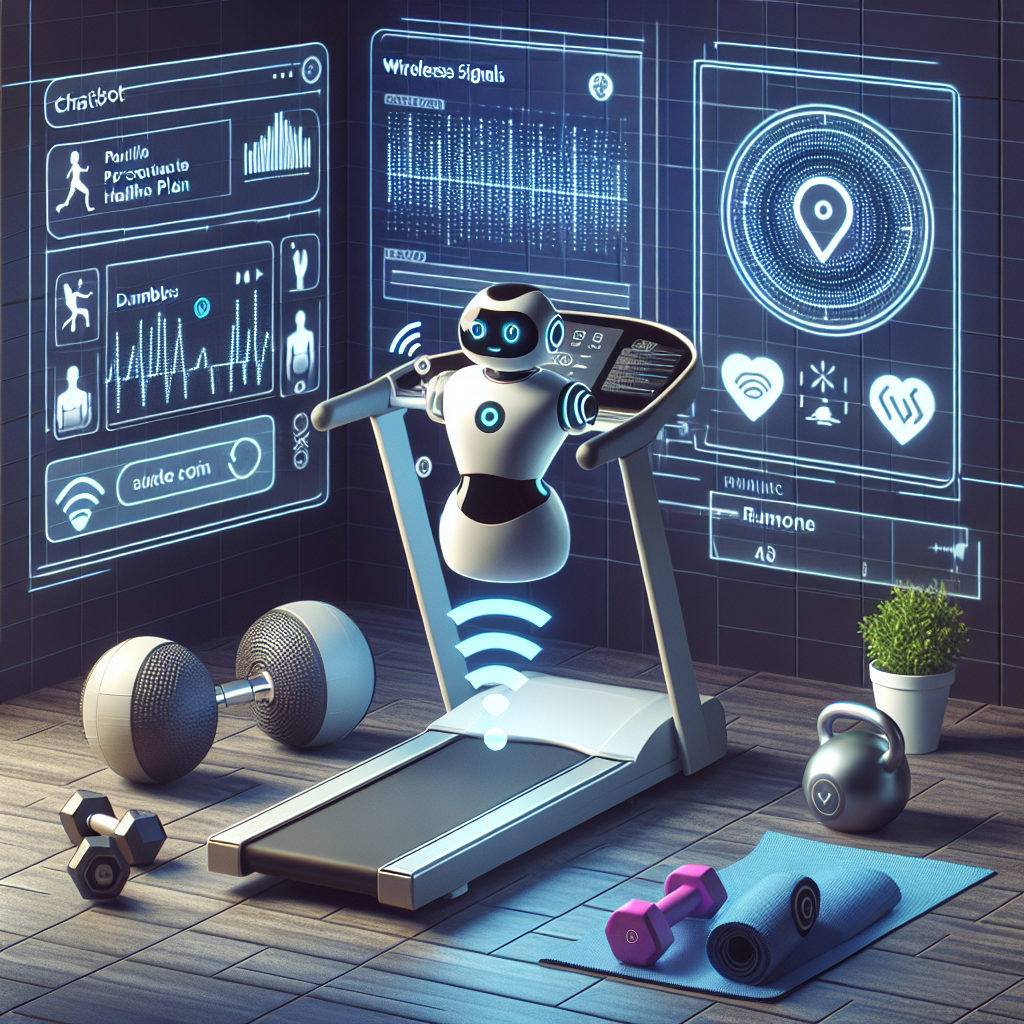In recent years, the use of conversational AI in the fitness and wellness industry has been on the rise. Conversational AI, also known as chatbots or virtual assistants, is a technology that allows users to interact with computer programs using natural language. This technology has the potential to revolutionize the way people track their fitness and health goals by providing personalized recommendations and guidance.
One of the key benefits of conversational AI in fitness and wellness is its ability to personalize health and fitness plans for individuals. By analyzing the user’s goals, preferences, and previous activity data, chatbots can provide tailored advice on exercise routines, nutrition plans, and lifestyle changes. This level of personalization is crucial for long-term success in achieving health and fitness goals, as it takes into account the unique needs and circumstances of each individual.
For example, a chatbot can recommend specific exercises based on the user’s fitness level, goals, and any existing health conditions. It can also provide guidance on proper form, intensity, and frequency of workouts to maximize results and prevent injuries. Additionally, chatbots can offer personalized nutrition advice, such as meal plans, recipes, and calorie tracking, to help users achieve their weight loss or muscle gain goals.
Conversational AI can also be used to monitor progress and provide motivation to users. By tracking daily activities, such as workouts, meals, and sleep patterns, chatbots can offer real-time feedback and encouragement to keep users on track. This continuous support can help individuals stay motivated and accountable, leading to better adherence to their health and fitness plans.
Furthermore, chatbots can assist users in setting realistic and achievable goals by breaking them down into smaller, manageable steps. By providing guidance on goal setting, tracking progress, and making adjustments as needed, chatbots can help users stay focused and committed to their health and fitness journey.
In addition to personalized recommendations and motivation, conversational AI in fitness and wellness can also offer convenience and accessibility. Users can interact with chatbots anytime, anywhere, using their smartphones or other devices. This flexibility allows individuals to access support and guidance whenever they need it, without the constraints of time or location.
Moreover, chatbots can integrate with other fitness and health apps and devices, such as activity trackers, smart scales, and nutrition apps, to provide a seamless experience for users. This integration allows chatbots to access additional data points and provide more accurate and relevant recommendations to users.
Despite the many benefits of conversational AI in fitness and wellness, there are also some challenges and limitations to consider. For example, chatbots may not always understand complex or nuanced language, leading to misinterpretations or errors in recommendations. Additionally, privacy and security concerns may arise when sharing personal health data with chatbots, as users may be hesitant to disclose sensitive information.
To address these challenges, developers and providers of conversational AI in fitness and wellness must prioritize data privacy and security measures to protect user information. They should also continue to improve the accuracy and reliability of chatbots through ongoing training and updates to ensure that users receive the most relevant and helpful recommendations.
Overall, conversational AI has the potential to revolutionize the way individuals track and achieve their health and fitness goals by providing personalized recommendations, motivation, and support. By leveraging the power of artificial intelligence and natural language processing, chatbots can empower users to take control of their health and wellness in a more personalized and convenient way.
FAQs:
1. How does conversational AI in fitness and wellness work?
Conversational AI in fitness and wellness uses natural language processing and artificial intelligence to interact with users and provide personalized recommendations and guidance on health and fitness goals. Users can chat with chatbots using their smartphones or other devices to receive advice on exercise routines, nutrition plans, and lifestyle changes based on their goals, preferences, and previous activity data.
2. What are the benefits of using conversational AI in fitness and wellness?
Some of the key benefits of conversational AI in fitness and wellness include personalized recommendations, motivation, convenience, and accessibility. Chatbots can tailor health and fitness plans to individuals’ unique needs, provide real-time feedback and encouragement, and offer support anytime, anywhere. Additionally, chatbots can integrate with other fitness and health apps and devices to provide a seamless experience for users.
3. Are there any limitations or challenges to using conversational AI in fitness and wellness?
While conversational AI in fitness and wellness offers many benefits, there are also some challenges and limitations to consider. For example, chatbots may not always understand complex or nuanced language, leading to misinterpretations or errors in recommendations. Additionally, privacy and security concerns may arise when sharing personal health data with chatbots. Developers and providers of conversational AI must prioritize data privacy and security measures and continue to improve the accuracy and reliability of chatbots through ongoing training and updates.
4. How can users ensure the privacy and security of their personal health data when using conversational AI in fitness and wellness?
Users can protect their personal health data when using conversational AI in fitness and wellness by choosing reputable providers and platforms that prioritize data privacy and security. They should carefully read privacy policies and terms of service to understand how their data will be used and shared. Users should also be cautious about sharing sensitive information with chatbots and only provide necessary details to receive personalized recommendations and guidance.
5. How can individuals get started with using conversational AI in fitness and wellness?
To get started with using conversational AI in fitness and wellness, individuals can download health and fitness apps that offer chatbot features or access chatbots through websites or social media platforms. They can then interact with chatbots by asking questions, setting goals, and receiving personalized recommendations and guidance on exercise, nutrition, and lifestyle changes. Users should explore different chatbots and platforms to find the one that best meets their needs and preferences.

